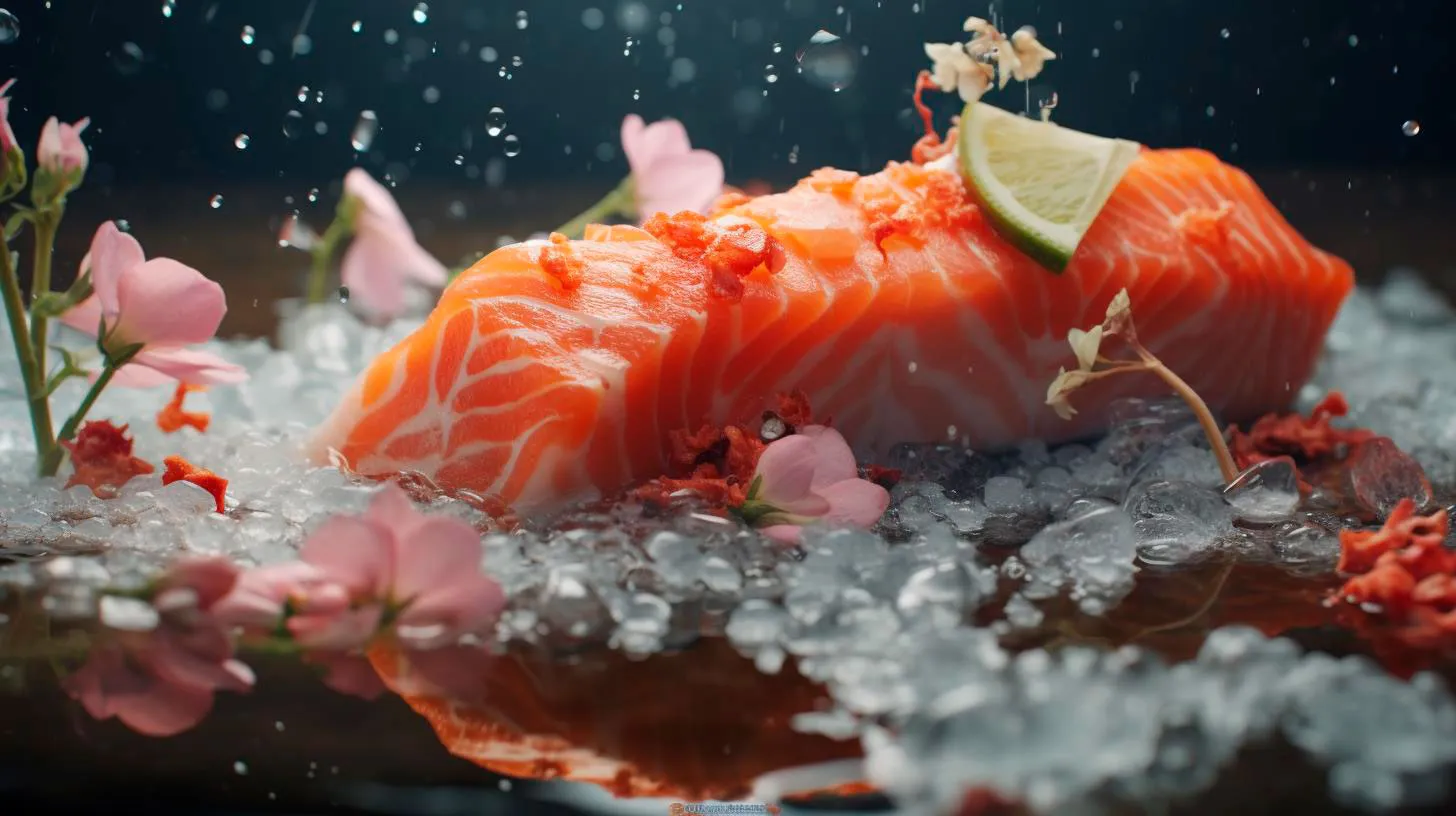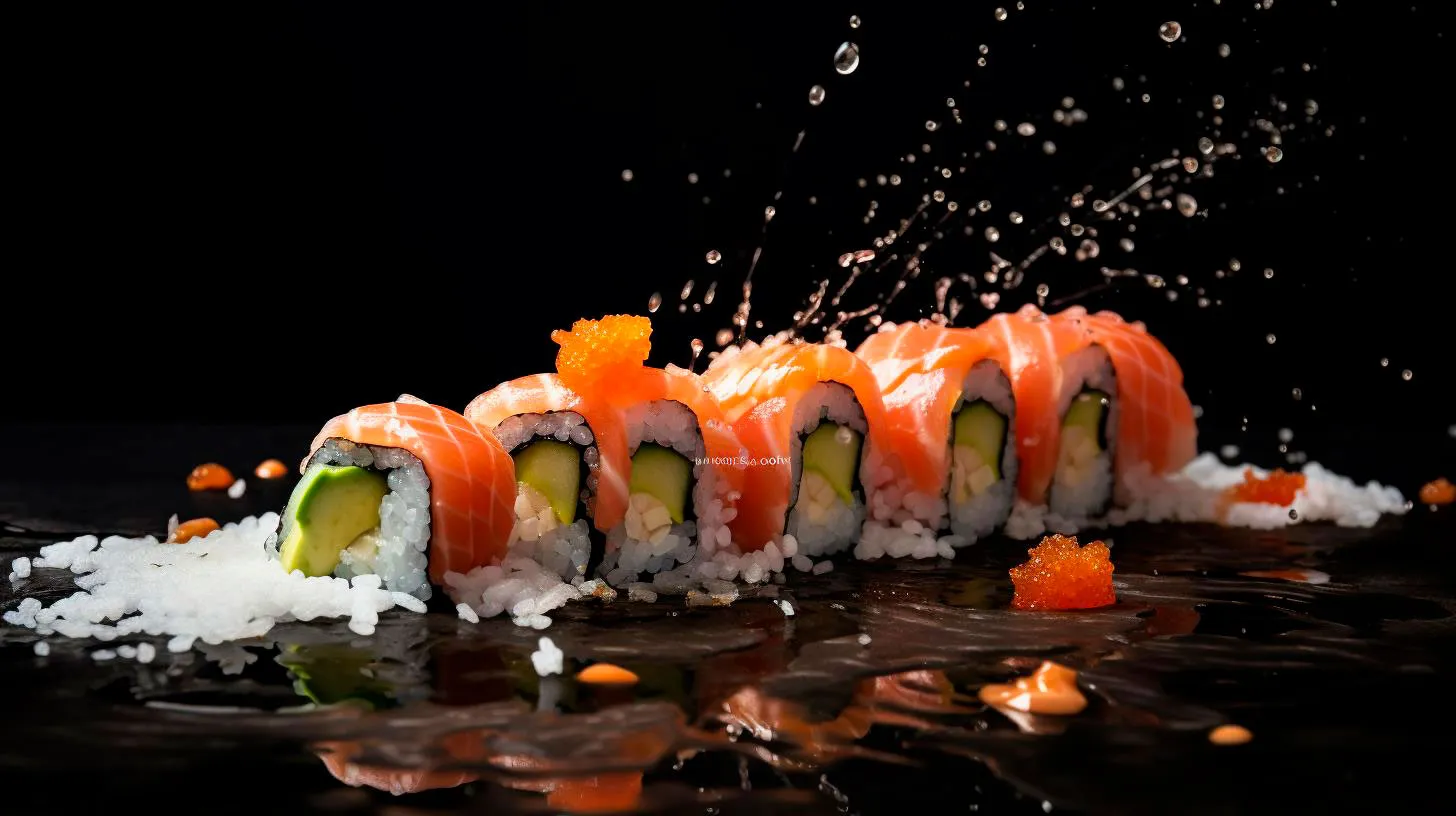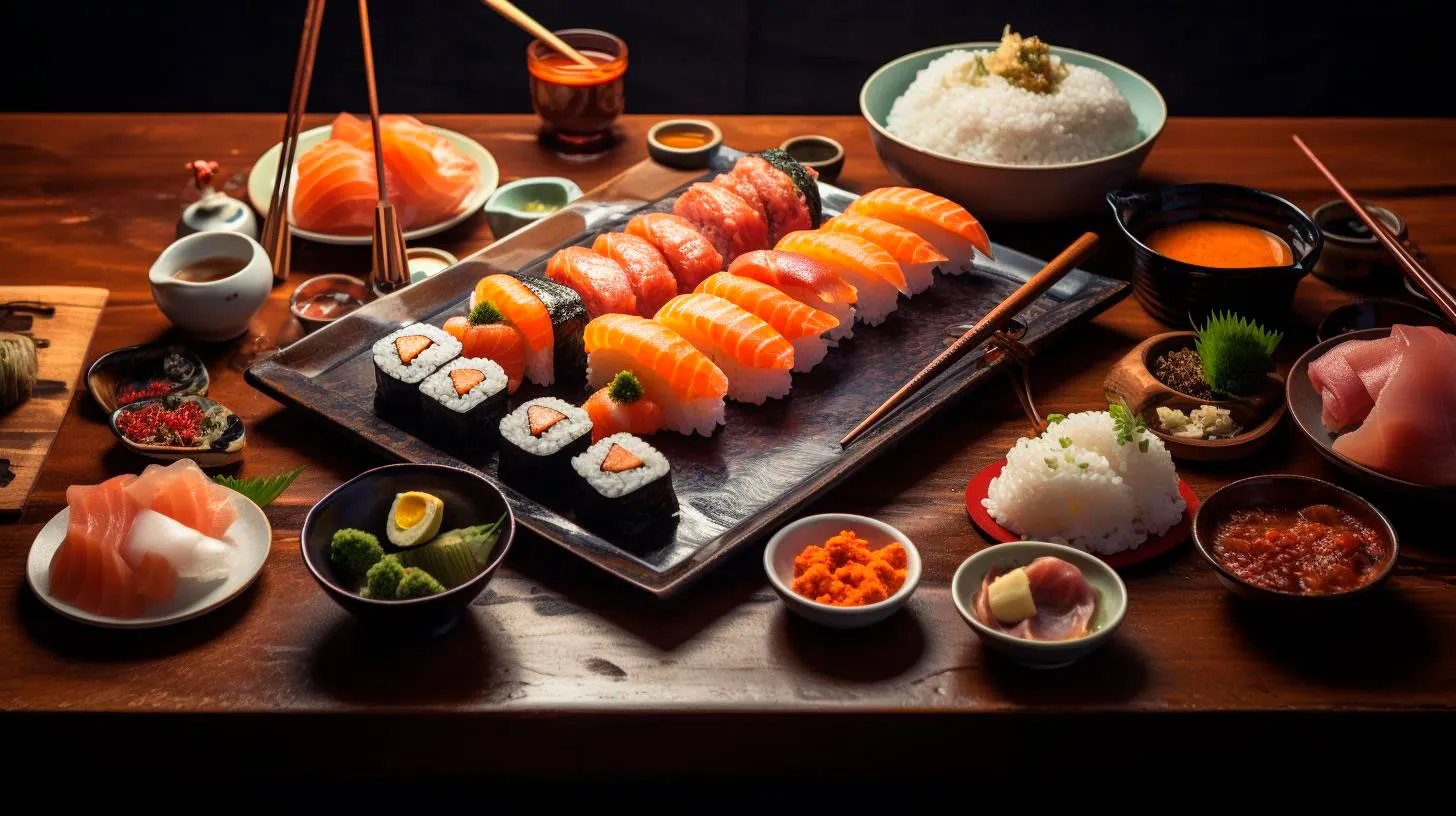Mastering Knife Skills Precision for Sushi Presentation
In this article, we will explore the importance of knife skills in sushi making and provide valuable tips on how to become a master of precision.
Why Knife Skills Matter in Sushi Making
Knife skills are the foundation of sushi making. A skilled sushi chef knows that the preparation of ingredients is crucial for achieving the perfect texture and appearance of sushi rolls. While the flavors of different fish and other ingredients play a significant role, it is the precision in cutting these ingredients that truly elevates the final presentation.
Here are some key reasons why mastering knife skills is essential for sushi making:
- Uniformity: Precisely cut ingredients ensure that each piece of sushi is beautifully uniform, creating a visually appealing presentation.
- Texture: The way ingredients are cut impacts their texture, enhancing the overall dining experience. Well-cut fish, for example, will have a smooth texture, allowing it to meld perfectly with the other flavors in the roll.
- Visual Appeal: Aesthetics play a vital role in the presentation of sushi. Finely minced herbs, precisely sliced fish, and neatly arranged toppings all contribute to an eye-catching dish that tempts the taste buds.
Knife Types and Techniques
There are various types of knives used in sushi making, each serving a specific purpose. Here are some of the essential knives and techniques:
Yanagiba Knife:
The Yanagiba knife is the traditional sushi knife used for slicing fish. With its long and slender blade, the Yanagiba allows for clean, precise cuts, ensuring the fish retains its freshness and appearance. The technique used when slicing with a Yanagiba knife is called “sashimi-giri,” which involves a single fluid motion without applying unnecessary pressure.
Deba Knife:
The Deba knife is a versatile knife used for filleting fish, chopping through bones, and removing the scales. With its thick and sturdy blade, the Deba knife provides the necessary power to handle these tasks effectively. The “osaka-giri” technique is employed when using the Deba knife for cutting sushi ingredients.
Usuba Knife:
The Usuba knife is a traditional Japanese knife used for precise vegetable cutting. It has a thin, rectangular blade that allows for delicate slicing, julienning, and even intricate vegetable carving. The precise technique used with an Usuba knife is known as “katsuramuki,” which involves peeling vegetables in a continuous thin sheet.
Tips for Mastering Knife Skills
Mastering knife skills takes time and practice. Here are some valuable tips that will help you improve your precision:
- Invest in High-Quality Knives: A sharp and well-balanced knife is essential for achieving precision in your cuts. Invest in high-quality knives that will last and perform consistently.
- Practice Knife Maintenance: Regularly sharpening and honing your knives will ensure they stay in optimal condition. Dull knives not only make cutting more difficult but can also lead to accidents.
- Focus on Technique: Each knife has a specific cutting technique. Spend time studying and practicing these techniques to achieve the desired results.
- Precision over Speed: While speed comes with practice, it is essential to focus on precision rather than rushing through cuts. Slow down and pay attention to detail.
- Learn from Experts: Consider taking professional sushi or knife skills classes. Learning from experienced chefs can provide invaluable insights and guidance.
Conclusion
Mastering knife skills precision is a fundamental aspect of sushi making. It allows chefs to craft visually stunning sushi presentations and ensures the perfect texture and balance of flavors. By understanding the importance of knife skills and implementing the proper techniques, you can elevate your sushi-making game and create culinary delights that are not only delicious but also visually captivating.
Remember, practice makes perfect. Invest in quality knives, maintain them properly, and focus on refining your technique. With time and dedication, you will master the art of knife skills precision, becoming a true sushi presentation maestro.
Creative Garnishes Adding Flair to Sushi Presentation
These garnishes not only enhance the visual appeal of sushi but also provide an opportunity for chefs to express their creativity and add unique flavors to the dish. Let’s dive into the world of creative garnishes and discover how they can elevate sushi presentation to new heights.
The Importance of Creative Garnishes
A visually appealing presentation is essential for any dish, and sushi is no exception. Creative garnishes play a vital role in enhancing the aesthetics of sushi, captivating diners with their artistic and vibrant appeal. Here are a few reasons why creative garnishes are crucial for sushi presentation:
- Enhanced Visual Appeal: Creative garnishes transform sushi from a simple dish to a work of art. With carefully placed garnishes, chefs can create eye-catching arrangements that intrigue and entice diners even before they taste the sushi.
- Flavor Accents: Garnishes such as microgreens, colorful herbs, and edible flowers not only add visual appeal but also provide additional flavors that complement the sushi. These accents bring a delightful burst of freshness and enhance the overall taste experience.
- Brand Differentiation: In today’s competitive culinary world, standing out is crucial. Creative garnishes offer an opportunity for sushi chefs to display their unique style and distinguish themselves from others in the industry. By providing exceptional presentations, sushi establishments can leave a lasting impression on their customers.
- Social Media Sensation: In the age of Instagram and other visual-based platforms, visually striking food presentations are a hit. Unique and creatively garnished sushi is likely to be shared and reposted, extending its reach beyond the restaurant to a wider audience.
Creative Garnishing Techniques
There are various ways to incorporate creative garnishes into sushi presentation. Here are three popular techniques:
Microgreens and Edible Flowers:
Microgreens and edible flowers have gained popularity as aesthetic garnishes in recent years. These tiny greens and delicate blossoms come in vibrant colors and add a burst of freshness to any sushi dish. Some popular options include micro cilantro, amaranth, chive blossoms, and marigold petals. These delicate garnishes are not only visually appealing but also have a subtle flavor that complements the other sushi ingredients.
Key takeaway: Experiment with different microgreens and edible flowers to add beauty and flavor accents to your sushi creations.
Vegetable Carvings:
Vegetable carvings are a traditional garnishing technique used in sushi presentations. Chefs skillfully carve various vegetables, such as carrots, cucumbers, and radishes, into intricate shapes and designs. These carvings not only enhance the visual appeal but also provide a playful element to the sushi dish. Common designs include flowers, animals, and Japanese motifs like cherry blossoms and fans.
Key takeaway: Invest time in learning vegetable carving techniques to create visually stunning sushi presentations with intricate designs.
Sauces and Drizzles:
Sauces and drizzles are versatile garnishing tools that can add both visual appeal and distinct flavors to sushi. Chefs can utilize a wide range of sauces, such as soy reduction, teriyaki glaze, spicy mayo, or ponzu, to create intricate patterns or simple drizzles. These sauces not only enhance the overall appearance but also provide an additional taste dimension that complements the sushi ingredients.
Key takeaway: Master the art of sauce drizzling to add a touch of elegance and flavor complexity to your sushi presentations.
Conclusion
With sushi becoming more popular than ever, creative garnishes have taken center stage in the world of sushi presentation. These artistic additions not only enhance the visual appeal of sushi but also provide an avenue for chefs to showcase their creativity and add unique flavors. By incorporating microgreens, edible flowers, vegetable carvings, and sauces, sushi chefs can elevate their presentations to new heights, impressing diners with both their culinary skills and visual artistry.
Harmonizing Colors and Textures: Sushi Presentation Tips
When it comes to sushi presentation, harmonizing colors and textures is crucial. It creates an aesthetically pleasing visual experience that entices the senses. Let’s explore some useful tips to master the art of harmonizing colors and textures in sushi presentation.
The Importance of Colors
Colors can evoke emotions, set the mood, and impact our dining experience. Incorporating the right colors in sushi presentation can make a significant difference in how it is perceived. Here are some essential tips to consider when selecting colors for your sushi:
- Choose vibrant colors: Vibrant colors like red, orange, and green can make your sushi visually appealing and appetizing.
- Contrasting colors: Pairing contrasting colors such as black and white, or green and red, creates a visually dynamic presentation.
- Balance warm and cool tones: Balancing warm tones (reds, oranges) with cool tones (blues, greens) adds depth and balance to your sushi platter.
Remember, the goal is to create a visually appealing and appetizing experience for your guests, so choose colors that complement each other and the overall ambiance of the restaurant.
Playing with Textures
Textures add another dimension to the sushi experience. Combining different textures can create an interesting and enjoyable dining experience. Here are some texture tips to consider:
- Crunchy elements: Adding crispy tempura flakes, toasted sesame seeds, or even thinly sliced vegetables gives sushi an exciting crunch.
- Creaminess: Smooth textures like avocado, mayonnaise, or cream cheese add a creamy element to balance out the sushi’s textures.
- Softness: Soft textures like thinly sliced fish, delicate tofu, or tamago (Japanese omelet) provide a contrast to crunchy and creamy elements.
By incorporating a variety of textures, you can create a unique sushi experience that keeps your guests engaged from the first bite to the last.
Pairing Colors and Textures
Now that we understand the importance of colors and textures, let’s explore how to effectively pair them in sushi presentation:
- Contrasting colors and textures: Pairing contrasting colors and textures enhances the visual appeal of sushi. For example, combining creamy avocado with crunchy tobiko (flying fish roe) can create a delightful and eye-catching contrast.
- Complementing colors and textures: Choosing colors and textures that complement each other creates a harmonious sushi presentation. For instance, pairing smooth, thinly sliced salmon with vibrant orange ikura (salmon roe) creates a visually appealing combination.
- Using a color scheme: Picking a color scheme, such as shades of green or a monochromatic palette, can make your sushi presentation visually cohesive and aesthetically pleasing.
Experimenting with different color and texture combinations allows you to unleash your creativity while ensuring a visually stunning sushi platter for your guests.
Key Takeaways
Creating a visually appealing sushi presentation involves harmonizing colors and textures. Here are some key takeaways to remember:
- Choose vibrant colors that complement each other and set the desired mood.
- Play with a variety of textures to add depth and interest to your sushi.
- Pair contrasting colors and textures for a visually dynamic presentation.
- Complement colors and textures to create a harmonious sushi platter.
- Experiment with different color schemes to achieve a visually cohesive presentation.
Mastering the art of harmonizing colors and textures in sushi presentation not only showcases your creativity but also enhances the dining experience. With these tips in mind, you can create visually stunning sushi platters that leave a lasting impression on your guests.
The Art of Plating: Elevating Sushi Presentation
In this article, we delve into the art of plating and explore how it enhances sushi presentation.
Why Plating Matters
Plating is not just about making the dish appear visually appealing; it is an art form that adds depth and dimension to the overall culinary experience. When it comes to sushi, presentation can make or break the entire dining experience. Here’s why plating matters:
- Visual Appeal: Well-plated sushi stimulates the visual senses, making it more enticing and appetizing. Intricate arrangements and thoughtful placement of ingredients create an immediate visual impact.
- Enhanced Flavor Perception: The way food is presented can affect the perception of taste. A beautifully plated sushi dish can make it appear more flavorful and appetizing to diners.
- Cultural Significance: Plating sushi with precision and care reflects the respect for Japanese culinary traditions. It honors the craftsmanship involved in creating each piece of sushi.
The Art of Sushi Plating
Mastering the art of sushi plating requires attention to detail, creativity, and an understanding of the principles of design. Here are a few key factors to consider:
Color Palette
Color is an essential element in sushi plating. Combining vibrant hues not only enhances visual appeal but also represents a harmonious balance of flavors. The use of contrasting colors, such as bright orange salmon against dark green nori, creates a striking visual impact.
Balance and Symmetry
Striving for balance and symmetry in sushi plating creates a sense of harmony. Each piece should be arranged deliberately, making sure that it is visually balanced. Placing ingredients symmetrically adds a touch of elegance to the presentation.
Texture and Height
Incorporating various textures in sushi plating adds a dynamic element to the dish. Combining crunchy, smooth, and soft textures not only adds a pleasant mouthfeel but also adds visual interest. Additionally, creating varying heights with sushi rolls or garnishes adds dimension to the plate.
Garnishes and Accents
Well-chosen garnishes and accents can elevate the visual appeal of sushi. The use of microgreens, edible flowers, or thinly sliced vegetables as garnishes adds color and freshness to the plate. Accents like wasabi, ginger, or soy sauce can be strategically placed to enhance the overall presentation.
Key Takeaways
- Plating sushi is an art form that enhances the overall dining experience.
- Visual appeal plays a crucial role in making sushi more enticing and appetizing.
- Well-plated sushi can enhance the perception of flavors.
- Attention to detail and creativity are essential in the art of sushi plating.
- Consider factors like color, balance, texture, and garnishes in sushi presentation.
Elevating sushi presentation through thoughtful plating techniques takes the culinary experience to a whole new level. Devoting time and effort to create visually stunning sushi not only pleases the eyes but also enhances the overall enjoyment of the meal. So, the next time you indulge in sushi, take a moment to appreciate the artistry that goes into its presentation. Remember, every sushi chef is an artist, and their canvas is the plate.


